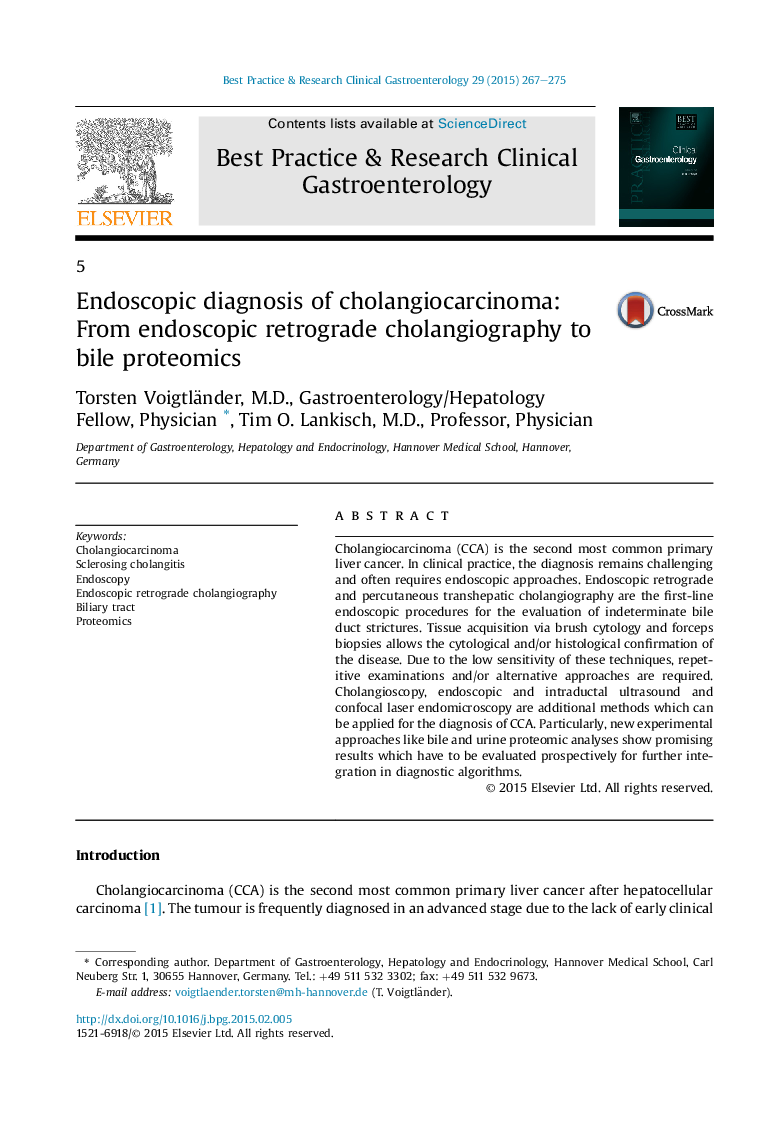| Article ID | Journal | Published Year | Pages | File Type |
|---|---|---|---|---|
| 3254325 | Best Practice & Research Clinical Gastroenterology | 2015 | 9 Pages |
Cholangiocarcinoma (CCA) is the second most common primary liver cancer. In clinical practice, the diagnosis remains challenging and often requires endoscopic approaches. Endoscopic retrograde and percutaneous transhepatic cholangiography are the first-line endoscopic procedures for the evaluation of indeterminate bile duct strictures. Tissue acquisition via brush cytology and forceps biopsies allows the cytological and/or histological confirmation of the disease. Due to the low sensitivity of these techniques, repetitive examinations and/or alternative approaches are required. Cholangioscopy, endoscopic and intraductal ultrasound and confocal laser endomicroscopy are additional methods which can be applied for the diagnosis of CCA. Particularly, new experimental approaches like bile and urine proteomic analyses show promising results which have to be evaluated prospectively for further integration in diagnostic algorithms.
